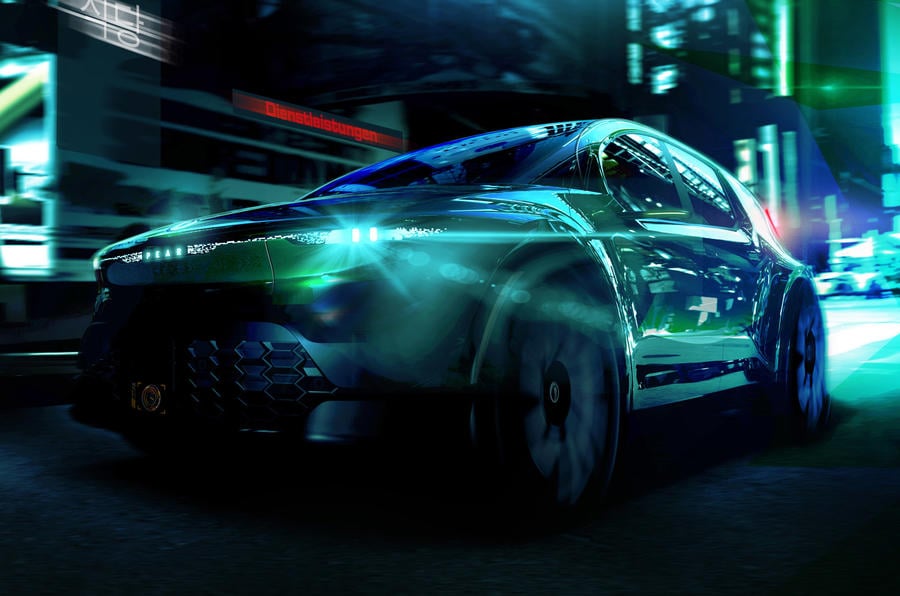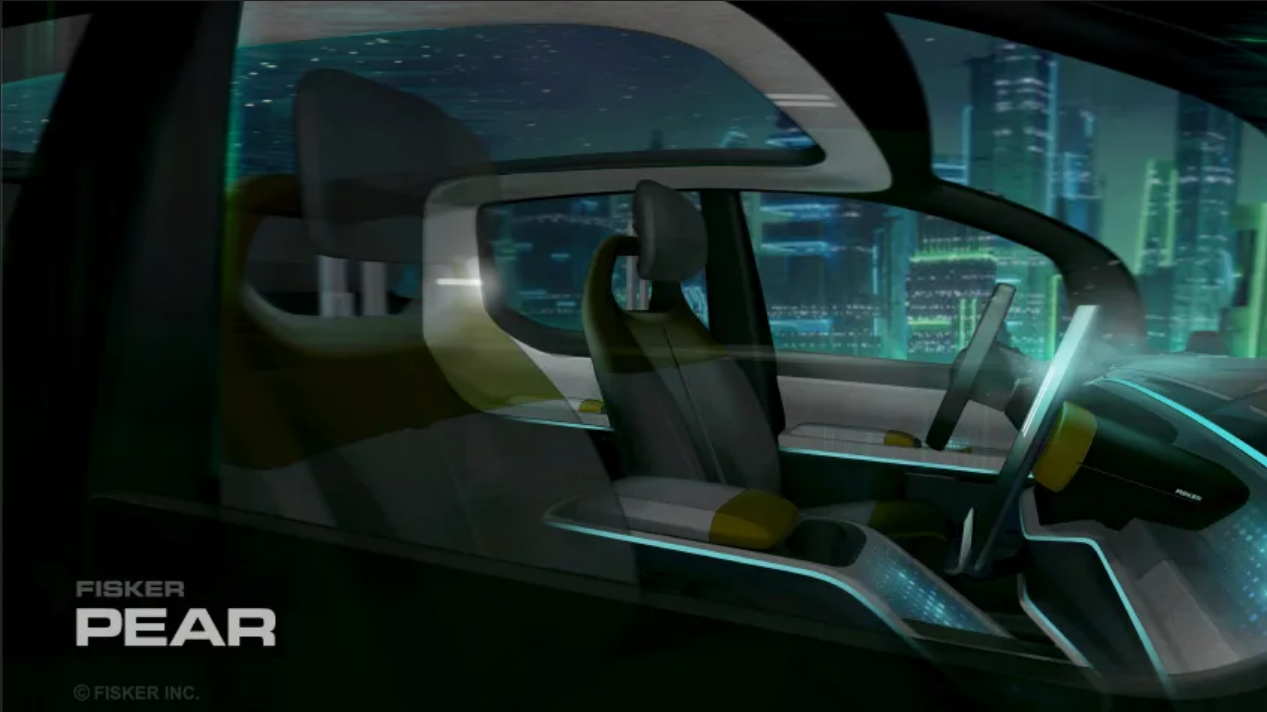Fisker Pear EV will be a “futuristic little space shuttle” with many unique features.
With the Fisker Ocean SUV on track to enter production in Austria early next year, the US electric vehicle start-up is shifting attention to the development of the smaller, US-built Pear city car – which, it says, is crucial to its ambitious growth plans.
Unlike the Fisker Ocean which is a Tesla Model 3 rival, the Pear (Personal Electric Automotive Revolution) is a much more compact and affordable proposition. (A starting price of less than US$30,000 (AUD$42,000) has been mooted.) Company boss Henrik Fisker told us the Pear “is the vehicle that ultimately will take us to a million vehicles – we hope – per year, in 2027.”
It will be built by technology manufacturing giant Foxconn at a facility in Ohio – previously owned by General Motors – at an initial rate of 250,000 units per year from 2024.
Design preview images issued so far have not given away many details, beyond hinting at various cues shared with the Ocean. But already it is clear that in its pricing, size and volume, the Pear could be a viable rival for the affordable EV trio on the way from Volkswagen Group brands Cupra, Skoda and VW, set to launch in 2025.
The Pear will be based on a dedicated steel platform – cheaper than the aluminium skateboard architecture of the Ocean – which will be used to spin off a further two EVs. The prevailing focus of its development programme is streamlining the manufacturing costs to ensure it can be sold as “a premium car for under $30,000” (AUD$42,000).
Fisker has appointed Alpay Uguz, previously general manager of BMW’s SUV production line in South Carolina, as a “manufacturing guru” to work with Foxconn on integrating cost efficiencies into the line, which, Henrik Fisker says, forms part of his firm’s ultimate ambition “to revolutionise automotive manufacturing and, to a certain extent, supply chain.”
Details of how the company can achieve this remain to be seen, but he said there is a “huge possibility for Fisker to have input in the factory” and the company is committed to keeping the number of components in the car to an absolute minimum.
Fisker describes the Pear as “kind of a funky vehicle” and says it is difficult to slot it into a segment: “I guess you’d call it a crossover but it doesn’t really look like an SUV. It looks like a futuristic little space shuttle – to describe it best.”
For that reason, he said, “it’s probably a little risky” because of the difficulties in benchmarking cars outside of core market segments and the fact that it has “a lot of unique features that have never been done before”.
He stopped short of detailing these but said the boot is accessed in a “very unique” way, rather than via a conventional hatch, and there will be a number of innovative storage solutions in the cabin.
Felix Page






